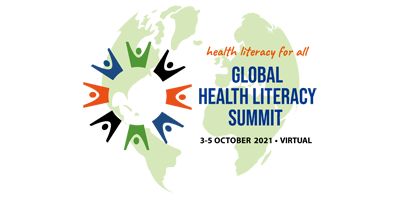Abstract Preview
Abstract
|
Title A mixed methods investigation of the barriers and facilitators of diabetes medication adherence across different health literacy levels |
|
Type Oral Presentation Only |
|
Theme Global Health Literacy Summit 2021 |
|
Topic Health literacy interventions and behavior change |
Authors
|
Main Author Yen-Ming Huang1 2 |
|
Presenting Author Yen-Ming Huang1 2 |
|
Co-Author Olayinka Shiyanbola3 Kristen Pecanac4 |
Authors' Institution
|
Department / Institution / Country Allied and Population Health / South Dakota State University / United States1 Graduate Institute of Clinical Pharmacy / National Taiwan University / Taiwan (台灣)2 School of Pharmacy / University of Wisconsin-Madison / United States3 School of Nursing / University of Wisconsin-Madison / United States4 |
|
Abstract Content (abstracts should be written in Size 11 font, Arial font style) Background: A deeper understanding of the specific communication and psychosocial factors related to medication-taking behaviors across different levels of health literacy among people with type 2 diabetes (T2D) will guide the development of tailored interventions to enhance medication adherence. Objectives: (1) To examine whether the barriers and facilitators associated with medication adherence differ among people with T2D across different levels of health literacy. (2) To explore patients’ perceptions of the barriers and facilitators of medication adherence across different levels of health literacy. (3) To understand how the qualitative interview data complement the quantitative survey results about the barriers and facilitators of medication adherence. Methods: This mixed-methods study used an explanatory sequential design, including a quantitative study with a survey questionnaire followed by a qualitative study with semi-structured interviews. The Health Literacy Pathway Model was used to identify the psychosocial and communication factors that may influence medication adherence. Participants enrolled were at least 20 years old, diagnosed with T2D, understood English, and prescribed at least one oral diabetes medicine daily. Analysis of covariance and direct content analysis were used respectively in quantitative and qualitative analysis. A joint display was used to present the integrated findings from quantitative and qualitative data. Results: In the quantitative phase, 205 participants provided complete information in the survey questionnaire. In the qualitative phase, 23 participants completed semi-structured interviews. Confirmed by quantitative and qualitative data, holding stronger self-efficacy, having fewer concern beliefs about medication, and possessing fewer perceived barriers to medication-taking are necessary for better medication adherence. Linking medication-taking to daily routine and focusing on the internal locus of control is an imperative approach to foster self-efficacy of medication use. Addressing patients’ life experience and clarifying medication misinformation may help participants cope with their concerns with medications. Solving the high cost of medications and therapy-related problems could lessen participants’ perception of barriers to medication-taking. Conclusion: To optimally support patients’ diabetes care, practitioners should address concern beliefs among non-adherent patients with low health literacy, as well as emphasize self-efficacy and perceived barriers to medication adherence among all non-adherent patients with T2D. |
Requires Audio or Video system for Presentation?: Yes
